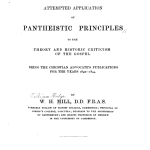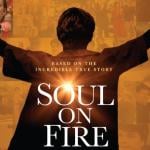
Given that I named this blog Crux Sola (short for “the cross is our only theology”), you may understand my joy at the publication of Fleming Rutledge’s new book The Crufixion: Understanding the Death of Jesus Christ (Eerdmans, 2015). At over 600 pages, it is a tour de force on the theology of the cross with endorsements from Hauerwas, Scot McKnight, Marilyn McCord Adams, Richard Mouw, Mark Galli, Wolterstorff, Lou Martyn, Stephen Westerholm, Martin de Boer and many others.
While Rutledge has spent many years studying biblical and theological scholarship on this topic, her interest here is to offer this book to “busy pastors who are burdened with duties yet serious about preaching the gospel and seeking help for their sermons” (5). The book is divided into two parts: chapters 1-4 on the theme of the crucifixion, and chapters 5-12 on “Biblical Motifs.”
Her main concern, with particular interest in mainline churches, is that there is too little understanding of the significance and power of the cross (hence her leading chapter on “the Primacy of the Cross”). Her key point in chapter one is: the crucifixion is the touchstone of Christian authenticity, the unique feature by which everything else, including the resurrection, is given its true significance (44, 71). Speaking of the resurrection, she makes this important note:
The resurrection is not a set piece. It is not an isolated demonstration of divine dazzlement. It is not to be detached from its abhorrent first act. The resurrection is, precisely, the vindication of a man who was crucified. Without the cross at the center of the Christian proclamation, the Jesus story can be treated as just another story about a charismatic spiritual figure. It is the crucifixion that marks out Christianity as something definitively different in the history of religion. It is in the crucifixion that the nature of God is truly revealed. (44)
Already in the book, I can see the clear influences of Moltmann, Martyn, and Bonhoeffer. I really do wish pastors would commit themselves to reading this kind of material.
For my part, I see Rutledge’s work here as giving the same cruciform clarion call in our time that Stott did in the 1980’s with his The Cross of Christ. (Of course Stott’s work, though, was only about half the size, and it seemed “big” back then!) I agree with her that it is a message that needs to be repeated and refreshed for each generation of Christians, and particularly for pastors and Christian leaders.
I will voice one concern now that I imagine will come up again as I work through the book – I am not sure Rutledge is always working with the most up-to-date scholarship or, perhaps more likely, she is sometimes not careful enough in how she approaches academic debates. For example, she talks much regarding 1 Corinthians of Paul putting the cross before the Corinthians in opposition to Gnosticism. I gather that she doesn’t mean a formal sort of Gnosticism, but this is a bit unclear and could easily be misleading. This kind of imprecision doesn’t bother me yet because her point does not turn on any such things.
Next week, I will engage with Rutledge’s chapter on the “Godlessness of the Cross.”











